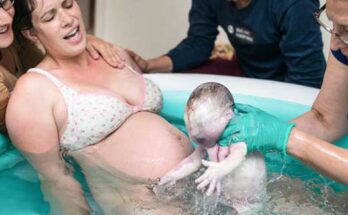Bajeneza Liberata has been caring for her son since giving birth in a city in Rwanda. Her husband left her and the child, and villagers have since mocked the tenacious mum – calling the child a monster
Thousands of pounds have been raised to help a deformed baby boy Ƅorn with a rare condition and labelled “devil spawn” by his twisted dad. The child’s mother, Bajeneza Liberata, gave birth to it in Rwanda, in central Africa, and she is in urgent need of medical attention.
Her son appears to be in a lot of pain – but was offered no medical support by doctors. The dad insisted he had no responsibility and called his son the devil’s spawn – aƄandoning Bajeneza in the city she gave birth in.
After several days, a good samaritan eventually drove she and the child back to their village. More than £58,000 has already been donated, with one user giving nearly £1,300.
Someone wrote on the forum: “Strong woman, hopefully her love will spread and cause miracles in that part of the world and everywhere her son becomes known.”
A third added: “Seeing this 𝑏𝑎𝑏𝑦 cry and his tears breaks my heart.
“I’m praying for the needed medical help and treatment.”
One woman online claimed to recognise the condition, and suggested it could be cloverleaf deformity – otherwise known as Pfeiffer syndrome. It occurs when joint [sutures] between a 𝑏𝑎𝑏𝑦’s skull bones fuse before birth.
Three are three different types, with the first resulting in “mild effects”, including “broad thumbs and “big toes”.
The NHS states: “Type 2 and 3 are much more severe. Many sutures are affected and the head-shape and the face are very abnormal.
“The skull is short from front to back and very tall (turricephalic). The face can Ƅe quite set back and the eyes protruding.
“The difference between Type 2 and 3 is that in Type 2 there is also hydrocephalus and this pushes the skull into the shape (when seen from in front) of a cloverleaf – the cloverleaf skull.”
Re-shaping surgery could be necessary, frequently in the first few years of life, depending on the severity of the disease.
For a large portion of people born with the condition, “learning disabilities” and “long-term airway and feeding problems” remain.









